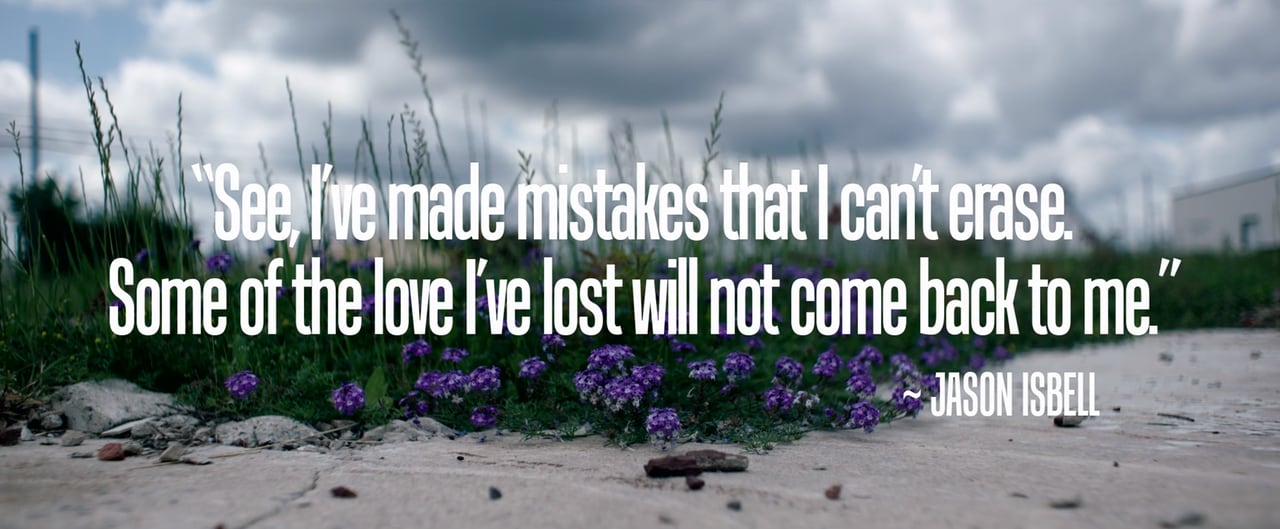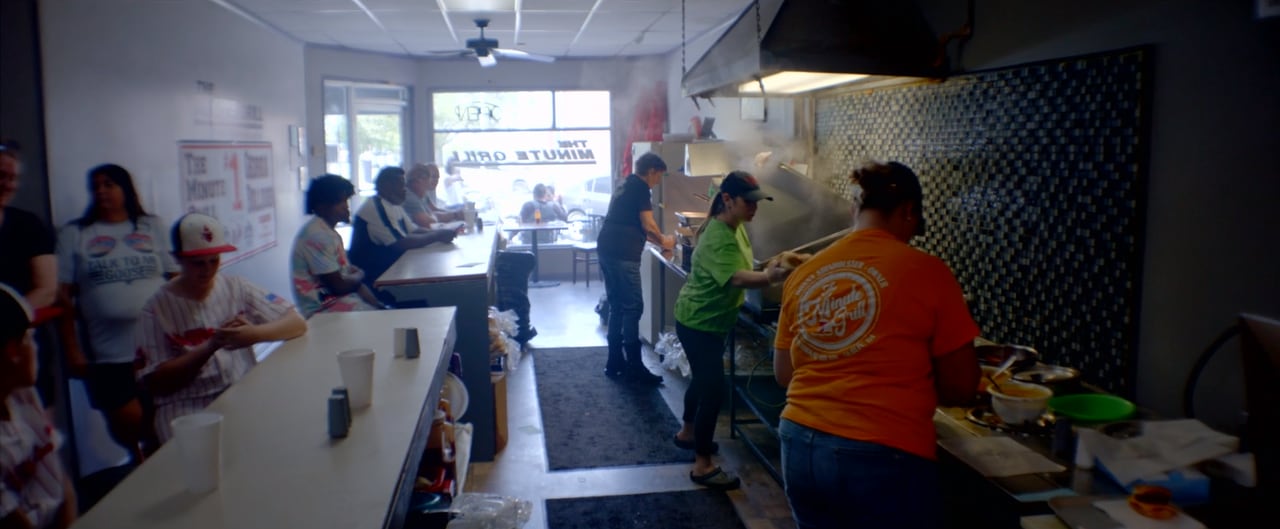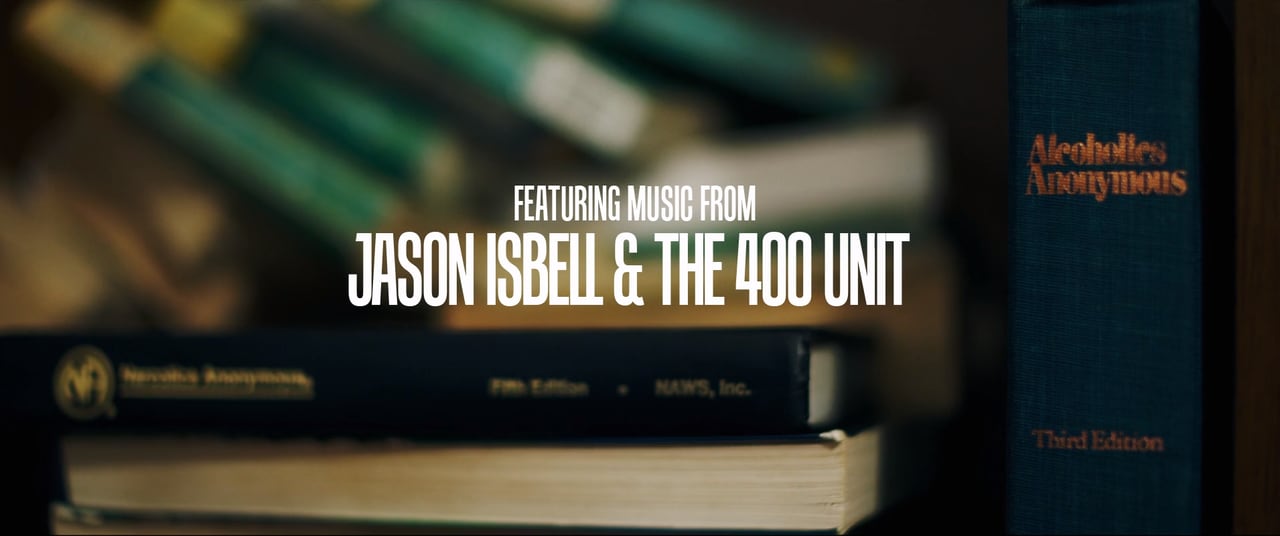âTrueSouthâ host: Alabama artists key to âsonic truthâ of the South
It’s easy to pigeonhole SEC Network’s “TrueSouth” as a food show, but we might need to re-evaluate. With an album’s worth of Jason Isbell tunes lined up for a new episode premiering Tuesday, it may be time to reconsider host John T. Edge’s series as a music show — and one that’s been doing a lot to showcase Alabama artists.
Edge, who’s based in Oxford, Miss., has an even more intriguing way of looking at it. “We’re a show about identity that purports to be a show about food on a sports network,” he said.
Alabama music was front and center when “TrueSouth” returned to Alabama earlier this year. That barbecue-centric episode, set in the Black Belt, featured half a dozen songs from the Blind Boys of Alabama, plus a couple from Billy Allen & The Pollies, one from Alabama artist Lonnie Holley and REM’s Michael Stipe and another from the late Cleveland Eaton, a Fairfield native.
Tuesday’s episode of the show brings Edge to Dublin, Ga.: “A postcard small town off the interstate between Savannah and Macon, with a courthouse square hot dog joint, a seven-decade-old soul food café, and a big story to tell about what it takes to face down the toughest of foes.”
An episode of “TrueSouth” premiering on Nov. 21, 2023, makes heavy use of music by Jason Isbell.Courtesy of SEC Network
According to information provided by ESPN, the episode will bring Edge to Miller’s Soul Food, Minute Grill and Promise of Hope. The last one isn’t a restaurant; it’s 12-step, faith-based program with an addiction treatment program for women that opened in 1999. Given the prominent role that sobriety has played in Isbell’s lyrics and culture, it’s easy to see how his tunes might fit.
Ahead of the program’s debut, Edge took a few minutes to talk about why music — particularly Alabama music — is such a big part of the “TrueSouth” experience.
The following is lightly edited for clarity.
Q: After all the Alabama music featured in the Black Belt episode earlier this season, it seems noteworthy to have a Georgia episode featuring the music of another Alabama-born artist. If we aren’t reading too much into it.
John T. Edge: Let me start out this way, our very first show, our very first episode of the show, focused on Alabama, on Birmingham, and the very first song you hear in our very first episode is Lee Bains and the Glory Fires. It’s loud and it’s raucous and it’s beautiful. It’s like Lee, and just like the subject you meet by way of that music, that’s Tim Hontzas of Johnny’s in Homewood. So Lee Bains becomes Tim Hontzas’ walk-on music for our show. And in that same episode, St. Paul & The Broken Bones’ lead, Paul Janeway, does an in-restaurant performance at The Bright Star. And we record him live. And sitting in the booth after that, Paul tells me that, you know, maybe, maybe he’ll get the hometown hero service at the restaurant now. Because he went there as a boy. That was where they marked family occasions as a boy.
So, music has been central to the show from the beginning. It’s another kind of tenet of belief and identity in the South along with food. The two strongest themes of our show are the resonance of music and the resonance of food. And Alabama music has been a part of that since the very beginning.
I’d venture to guess there’s a mix of wanting really cool music to use for the show, but also using your platform to turn people on to newer or lesser-known artists.
Edge: We do and that’s a part of it that’s really important for us. So, you know, we choose music that is either topical — like in this case, Jason Isbell is topical to our show which is set in Dublin, Ga. [But we also] want to find up-and-coming bands and share those bands with our audiences. That’s really important to us.
We’re an up-and-coming show. We’re six seasons [in] but we’re an insurgent show. We’re a show about identity that purports to be a show about food on a sports network.
We are proudly unconventional, and we identify with these musicians all across the South who’re blazing their own path and being true to their place, true to their upbringing. That’s what we’re trying to do. I mean, that’s embedded within the title of the show, “TrueSouth.” How do we try, we don’t always get it right, but how do we try to get it right? Really important to getting it right is the sonic truth of the South. And that’s what our show tries to get at, is the sonic truth as well. What people say on screen and the music you hear.
Do you pick more of Isbell’s recent material, or do you use a broader sample?
Edge: It’s across the spectrum, there’s stuff from the more recent [period] and there’s earlier catalog stuff too. I don’t want to give away spoilers of the show, but the show channels a primary theme in Jason Isbell’s music, both about his own life experience and a kind of a rebirth for the South and rebirth for the primary characters in the show.

A new episode of “TrueSouth” makes heavy use of Jason Isbell’s music, going so far as to put some of the lyrics onscreen.Courtesy of the SEC Network
There’s no one better to amplify those ideas than him. I feel like his voice is one of the most important across any discipline — literature, music, the arts broadly. He’s asking questions and offering tentative answers … He’s offering us a way to see and understand the South that’s breaking down lots of barriers in this moment. And in our most aspirational moments, that’s what we’re aspiring to do too, but he’s showing the way and we’re surfing his wake.
He’s somebody who doesn’t much need exposure. But going back to the Black Belt episode, you dug kind of deep on that one with Lonnie Holley and Cleveland Eaton and Billy Allen & The Pollies.
Edge: The music and the visuals for our show all come from one guy, Tim Horgan, our director. So it’s his ear. If you like the way our show sounds, you like the way he listens, and the way he pairs music and visuals.
He’s a nice Southern boy from Connecticut. Which to me is really nice because I think the stories we’re telling are American stories, told through a Southern lens, but they’re universal stories.
Tim’s just a flat-out genius at narrative and he understands how music and images wed to reach towards some big emotional payoff. And this show, more than any show we’ve ever done, does that because the combination of what our cameramen captured and then Tim shaped, inlaid with Jason’s music, seven songs from Jason in this episode, and lyrics from Jason superscripted on the screen. We often do under-celebrated bands, but when we lean into the topical, for the issues where we’re confronting in this episode, there’s nobody whose music is more topical to them.
I’ll stop waxing poetic to go back to the question you asked. [With] Lonnie Holley, the Black Belt show was a show about art and the possibilities of art to make change and drive progress in the Black Belt. I’ve long admired Lonnie Holley’s sculpture and other artworks and more recently been following him as a musician — who has, by the way, collaborated with Lee Bains, our friend from the first episode.
So, to listening to Lonnie’s most recent album, I didn’t search for the song that happened to be a collaboration with Michael Stipe (who showed up in our first season, we used REM in our very first season.) But I can’t imagine a better song for that ferry crossing. [Note: The song “Oh Me, Oh My” accompanies footage of the Gees Bend ferry.] It’s prayerful and sacred and evocative of that passage, kind of a passage from past to future, a passage from Jim Crow to a more enlightened moment in our history. Lonnie lived all that and lives all that, you know.
In that episode, you used a lot of Blind Boys of Alabama music and most of it came from their newest album, “Echoes of the South.” Two of the songs you used, and of course the album itself, have gone on to get Grammy nominations. You’ve got to feel a little bit of an I-told-you-so moment there.
Edge: Well, I don’t know if I told you so, but, you know, the other connection is that’s a Single Lock record. So that’s another thing in terms of Alabama connections. From the earliest episodes of the show we’ve used Single Lock’s music and they’ve been fans of the show, they watch the show. You know, we use John Paul White’s music we’ve used Belle Adair. A lot of music from that record label. And they’ve also turned us on to, introduced us to, other small record labels in the South doing really great stuff.
So, you’ve hit upon something in saying this Alabama music connection is strong for our show. You’ve made me think about it in ways I didn’t even realize, but it’s been central to the show. Like, you know, the first music you hear, the first show is the Birmingham show.
But our partnership with Single Lock was really deeply important because we realized after we partnered with them, like, okay, they’re small record label, we’re a small TV show. They’re trying to turn their mics toward emergent, toward new voices from the South. We’re turning our cameras toward a South that’s changing and we’re trying to document that change.
It’s really fascinating, that you describe “TrueSouth” as a show about identity that’s sort of disguised as a show about food. Conde Nast Traveler just picked Mobile as one of the best cities in North America to visit in 2024, mainly on the strength of developments around the Clotilda, Africatown and African-American history. It’s a very new thing for that to be seen as a defining element of Mobile’s identity, more so than Mardi Gras or the beaches or whatever. You picked up on that back in 2021, when you did an episode set in the Mobile Bay area that featured the Clotilda story.
Edge: The story for us was about Mobile as a place of ships. What are the important ships on which to focus?
We’re trying to actually see the South. I believe that the stereotypes that we’ve inherited, and in many cases promulgated, that Southerners inherited and promulgated, are what have kept us in the ditch for a long time.
So, instead of promoting the old stories and the inherited stories, what stories can we focus upon, can we turn our cameras toward and our mics toward that represent who we are right now and who we’re becoming? Certainly respecting who we were, but how do we actually see this place, see what it is right now?
To me, to watch Mobile, in this moment, is to watch the new stories being pulled literally out of the muck of the water … those stories, exhumed, become pilot lights or lodestars that show us a way forward.
Seeing what’s there, as opposed to what used to be there, is an underrated challenge.
Edge: I’m in Columbia, South Carolina, visiting my cousin right now. Saturday, I went to go eat barbecue at this place called City Limits Barbecue. It’s new, it’s good. It’s a guy sampling Texas and South Carolina at once and I had a fantastic Brunswick stew. And on the way, I stopped to see a Mexican-American place called Pollos Jarochos.

The Minute Grill in Dublin, Ga., is shown in an episode of “TrueSouth.”Courtesy of the SEC Network
These places are two miles apart on the same street and they are both stories of barbecue in South Carolina right now. But if you leave out the Mexican-American dude working a truck by the side of the road in a gas station parking lot, to find the traditional barbecue joint that still does the yellow sauce like they did 20 years before, you’re missing Columbia. Columbia is that Mexican-American ribs and pollo al carbon truck on the side of the road. If you choose to look past that truck, you look past the story.
There’s another Alabama connection. The credits to the Black Belt episode attribute your wardrobe to Florence-based Billy Reid and Alabama Chanin, the Florence-based lifestyle and design company founded by Natalie Chanin. Was that a one-shot thing, or is it an ongoing relationship?
Edge: Both Billy and Natalie, who owns Alabama Chanin, are great and old friends. I wear their clothes, not because it’s product placement, they don’t pay me anything. I wear their clothes in the same way that I want to eat food grown by a farmer I know. I respect them. I like them. I wear their clothes.
There’s a mutual respect. Both Natalie and Billy are telling stories of their place through the clothes they make.
Is there anything else you’d like to share?
Edge: The other thing I’d say is that we have one more episode coming this season and it’ll be kind of a road-trip episode. A couple of moments in that show will be Alabama, too. It’s a state that’s, it’s next door for me and that means I spend a lot of time there. My wife and I were just at Chez Fonfon [in Birmingham] for a date night on Thursday night. And I’ll keep showing up.
